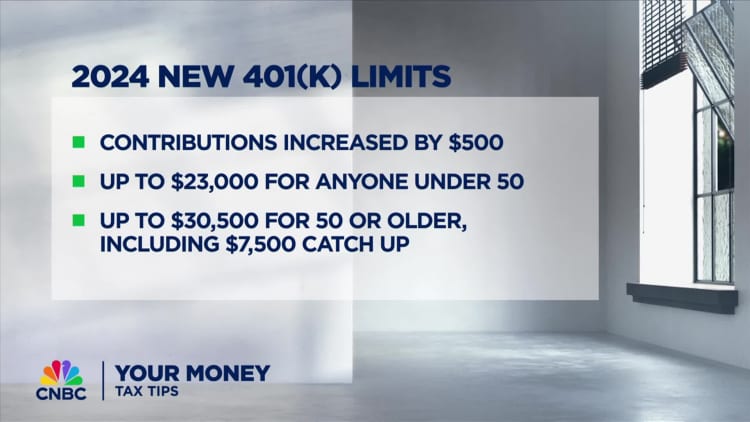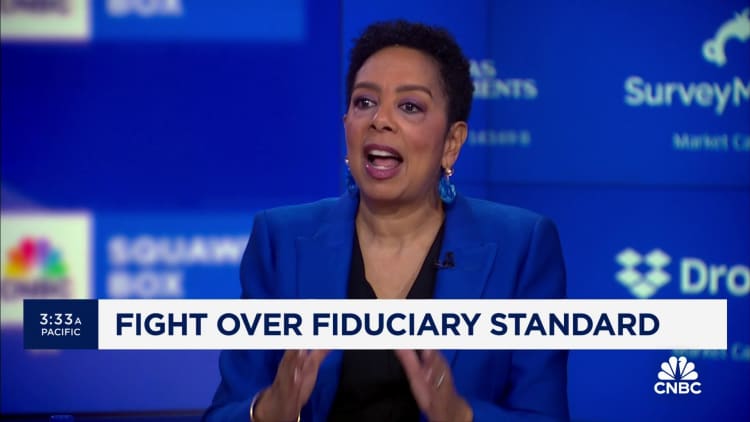Sturti | E+ | Getty Images
Leaks aren’t just a problem for pipes.
Billions of dollars a year drip from the U.S. retirement system when investors cash out their 401(k) plan accounts, potentially crippling their odds of growing an adequate nest egg.
The issue largely affects job switchers  especially those with small accounts  who often drain their accounts instead of rolling them over. They forfeit their savings and future earnings on that money.
About 40% of workers who leave a job cash out their 401(k) plans each year, according to the Employee Benefit Research Institute. Such “leakages” amounted to $92.4 billion in 2015, according to the group’s most recent data.

Research suggests much of that loss is attributable to “friction”  it’s easier for people to take a check than go through the multistep process of moving their money to their new 401(k) plan or an individual retirement account.
The 401(k) ecosystem would have almost $2 trillion more over a 40-year period if workers didn’t cash out their accounts, EBRI estimated.
However, recent legislation  Secure 2.0  and partnerships among some of the nation’s largest 401(k) administrators have coalesced to help reduce friction and plug existing leaks, experts said.
The movement “has really gained momentum in the last few years,” said Craig Copeland, EBRI’s director of wealth benefits research. “If you can keep [the money] there without it leaking, it will help more people have more money when they retire.”
85% of workers who cash out drain their 401(k)
U.S. policy has many mechanisms to try to keep money in the tax-preferred retirement system.
For example, savers who withdraw money before age 59½ must generally pay a 10% tax penalty in addition to any income tax. There are also few ways for workers to access 401(k) savings before retirement, such as loans or hardship withdrawals, which are also technically sources of leakage.
But job change is another access point, and one that concerns policymakers: At that point, workers can opt for a check (minus tax and penalties), among other options.
More from Personal Finance:
How to save for retirement in your 50s
What to know about aging in place in retirement
States try to close retirement savings gap
The average baby boomer changed jobs about 13 times from ages 18 to 56, according to a U.S. Labor Department analysis of Americans born from 1957 to 1964. About half of the jobs were held before age 25.
One recent study found that 41.4% of employees cash out some 401(k) savings upon job termination  and 85% of those individuals drained their entire balance.
“Did they need to? It’s hard to know for sure, but it is by no means a logical conclusion that cashing out is a good or necessary response to leaving or losing a job,” the authors  John Lynch, Yanwen Wang and Muxin Zhai  wrote of their research in Harvard Business Review.
It’s not all workers’ fault
It’s not all workers’ fault, though. By law, employers can cash out the small account balances of former employees who leave their 401(k) accounts behind. They can do so without workers’ consent and send them a check.
Prior to 2001, employers could do so for accounts of $5,000 or less.
However, a law passed that year  the Economic Growth and Tax Relief Reconciliation Act  was among the early steps to keep more of those funds in the retirement system.
If you can keep [the money] there without it leaking, it will help more people have more money when they retire.
Craig Copeland
director of wealth benefits research at the Employee Benefit Research Institute
It disallowed employers from cashing out balances of $1,000 to $5,000; instead, businesses who want those balances out of their company 401(k) must roll the funds to an IRA in respective workers’ names. Secure 2.0 raised that upper limit to $7,000 starting in 2024.
While that IRA workaround preserves more money in the retirement system, it’s an imperfect solution, experts said. For example, when rolled over, assets are generally held in cash-like investments such as money market funds, until investors decide to invest those assets differently. There, they earn relatively little interest while fees whittle away at the balance.
Many investors also ultimately cash out those IRAs, said Spencer Williams, founder of Retirement Clearinghouse, which administers such accounts.
Further, although employers notify workers of such IRA rollovers, workers who don’t take immediate action may forget about their accounts entirely.
Why a new 401(k) ‘exchange mechanism’ may help
In November 2023, six of the largest administrators of 401(k)-type plans  Alight Solutions, Empower, Fidelity Investments, Principal, TIAA and Vanguard Group  teamed up on an “auto portability” initiative to further stem leakage.
In basic terms, small balances  $7,000 or less  would automatically follow their owners to their new job, unless they elect otherwise. This way, workers’ savings left behind wouldn’t be cashed out or rolled to an IRA and potentially forgotten.

The concept leverages the same hands-off approach of other now-popular 401(k) features such as automatic enrollment, leveraging workers’ tendency toward inaction in their favor.
Auto portability is essentially a “very large exchange mechanism” within the 401(k) industry, said Williams, who’s also president and CEO of Portability Services Network, the entity facilitating these transactions. (Retirement Clearinghouse manages the infrastructure.)
A caveat: One of the six participating providers must be administering the worker’s 401(k) plan at both their old and new employers for the transfer to work, meaning not all workers will be covered. The companies collectively administer 401(k)-type accounts for more than 60 million people, or roughly 63% of the market, Williams said. More are invited to join the consortium.
At 70% market coverage, auto portability is expected to reconnect about 3 million people a year with 401(k) accounts they left behind upon job change, Williams said. The largest benefits accrue to young workers, low earners, minorities and women, the groups most likely to cash out and have the smallest balances, he said. ÂÂ
It’s not just workers who benefit: Administrators keep more money in the 401(k) ecosystem, likely padding their profits.
Secure 2.0 also gave a legal blessing to the auto portability concept, granting a “safe harbor” for the automatic transfer of assets, experts said.
A 401(k) ‘lost and found’ is in the works
Raja Islam | Moment | Getty Images
That law also separately directed the U.S. Labor Department to create a “lost and found” for old, forgotten retirement accounts by the end of 2024. The public online registry will help workers locate plan benefits they may be owed and identify who to contact to access them, according to a Labor Department spokesperson.
“Millions of dollars that people earn go unpaid every year because the plans have lost track of the workers and their beneficiaries to whom they owe money,” the spokesperson said. “This is a significant step forward in addressing the problem.”
The Technology Modernization Fund, a government program, in November announced a nearly $3.5 million investment with the Labor Department to help build the database.
In the meantime, workers who suspect they may have left behind an account have a few options to reclaim it, according to the Labor spokesperson:
- Check old records such as statements of benefits or summary plan descriptions to refresh your recollection about benefits. You can also use a Labor Department online search feature to look up whether your former employer or union has a retirement plan. Former co-workers may also be able to remind you about the company’s retirement plans, or if the company has since been acquired or changed its name.
- Contact former employers or unions to ask whether you earned a retirement benefit. Contacts may include a plan administrator, human resources, employee benefits department, the owner of the company (if a small business) or a labor union.
- Contact Employee Benefits Security Administration advisors for help at askebsa.dol.gov or by calling 1-866-444-3272.
Don’t miss these stories from CNBC PRO:
Read the original article here


